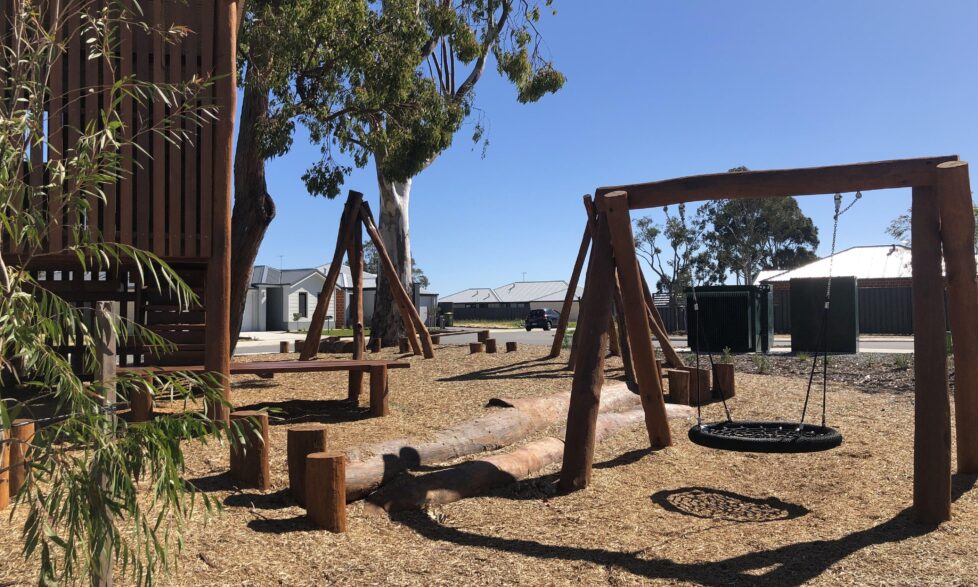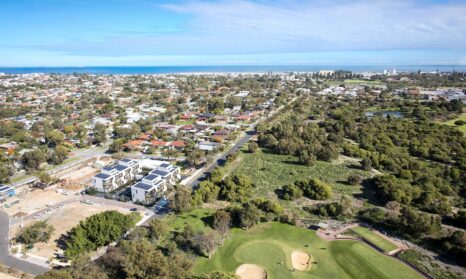The Amble Estate is challenging the status quo with affordable, sustainable homes
Our homes and communities are one of the most powerful places we can make change for a better, fairer and more sustainable future.
A growing population coupled with the urgent climate crisis means we need to make the development of low-impact homes mainstream. We need homes where it’s easy for people to enjoy sustainable lives – at a cost that is accessible to everyone.
More and more sustainable communities across the world exist, but few of them have a majority of affordable homes. A new self-build project in Western Australia is rising to the challenge, using Bioregional’s One Planet Living framework.
Homes that meet local needs
The Amble Estate is an infill development located in the suburb of Girrawheen, Perth, Western Australia - an area of socio-economic disadvantage1. There isn’t enough housing for people on lower incomes so any new homes need to be affordable and enable low-cost and high-quality living for the local community.
The project is being developed by Yolk Property Group, Department of Communities in Western Australia and Ventura Home Group. It will provide 105 ‘house and land’ self-build sites, 24 apartments and two parks, and is aiming for 90% affordable housing. This is the highest affordability ambition by a One Planet Living partner globally.
Sustainable homes, sustainable lives
Yolk Property Group has drawn on its experience delivering the Evermore WGV community, another Global Leader in One Planet Living, to embed sustainability without increasing costs.
The team is working with mainstream builders on house design upgrades that enable One Planet Living including:
- a range of housing sizes incorporating smaller lots and ‘growable’ homes. Growable homes are affordable two-bedroom homes with plans and infrastructure to build an additional two bedrooms and bathroom in the future
- no upfront cost and discounted energy costs for on-home solar installations
- incentives for homeowners to increase thermal insulation and install built-in ceiling fan
- standard upgrades that make homes more accessible and suitable for all ages
This could easily have been a standard low-density housing infill project. Instead, the Amble Estate team has taken the opportunity to demonstrate leadership and drive change for a better future.
Because of this, Bioregional has recognised the Amble Estate’s One Planet Action Plan for a Global Leadership in One Planet Living. It’s been particularly impressive to see the partners challenge each other’s approaches and try new things to create a positive community for people of every age and background.
Spreading sustainable change
The development team, working with the local City of Wanneroo, also plans to create a better, more sustainable local area and engage residents and builders alike with this transformative change. This will include:
- A new park with a playground, undercover seating and native planting and an upgrade to an existing park
- A community food garden
- Ongoing community engagement residents and people in neighbouring streets to encourage sustainable living
- New pedestrian and cycling routes through the estate and to surrounding amenities.
- A demonstration ‘growable home’ onsite to promote sustainable building measures, sustainability design guidelines and training for builders.
As Australia braces for a dry and hot summer we know the time is now; we can no longer continue the business as usual approach to cities and communities.
If we are to make One Planet Living mainstream in communities across the world, homes must be liveable for everyone – making sustainable choices easy, accessible and low-cost. The Amble Estate will demonstrate that this is doable. We look forward to other developers taking its lead and creating the future we all know we want.
1The SEIFA Index of Disadvantage is derived from attributes that reflect disadvantage such as low income, low educational attainment, high unemployment, and jobs in relatively unskilled occupations.






